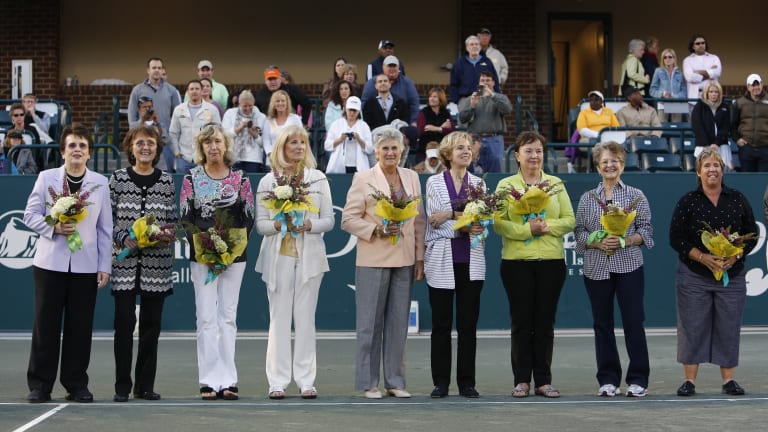Queens of the Court: How the Original 9 impacted the women's tour
By Dec 05, 2020Style Points
Zendaya pays tribute to the Williams sisters in Carolina Herrera gown and white beads
By Apr 19, 2024The Business of Tennis
Serena Williams open to owning WNBA team, calls women’s sport “overly safe bet”
By Apr 16, 2024Pop Culture
Serena Williams inspired Angel Reese's Vogue spread that heralded her WNBA intentions
By Apr 06, 2024Lifestyle
Serena Williams enters makeup space unveils Wyn Beauty for active clientele
By Apr 04, 2024Social
Serena Williams says she wishes she had Jannik Sinner's forehand in Miami Open meetup
By Mar 31, 2024Miami, USA
Top 5 Miami Finals, No. 2: Serena Williams d. Justine Henin, 2007
By Mar 26, 2024Social
Coco Gauff wants to play as the Big Three after TopSpin 2K25 unveils full player roster
By Mar 23, 2024Social
Serena Williams watches Venus Williams' match in Miami
Mar 19, 2024Indian Wells, USA
Top 5 Indian Wells Finals, No. 1: Serena Williams d. Steffi Graf, 1999
By Mar 17, 2024Queens of the Court: How the Original 9 impacted the women's tour
To put into perspective the effect of the Original 9’s bold move, in 2020 nine WTA players made the Forbes’ Top 10 list of highest-paid female athletes.
Published Dec 05, 2020
Advertising
Advertising

Queens of the Court: How the Original 9 impacted the women's tour
© AP